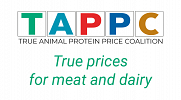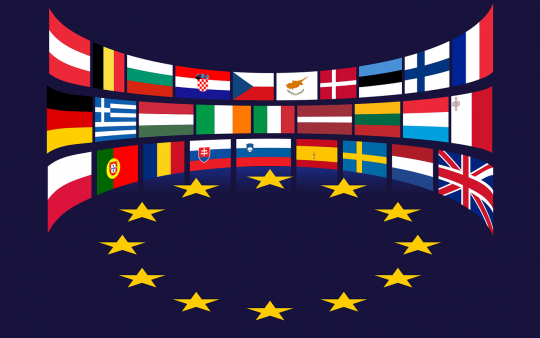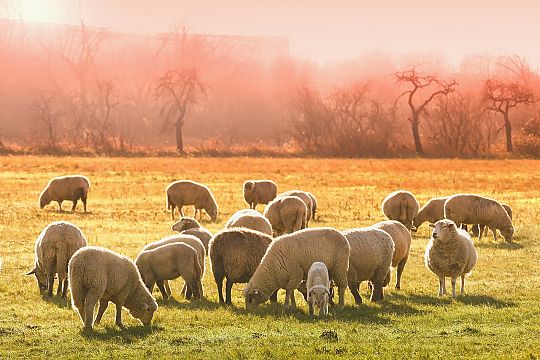TAPP Coalition Position on the EU Sustainable Food Systems Law and ETS
On 28 April, the European Commission opened its public consultation for the sustainable food system framework initiative. All stakeholders, including citizens, were invited to provide their input to this public consultation.
The legislative framework on sustainable food systems will lay down general principles and objectives for sustainability labelling of food products and for minimum criteria for sustainable public procurement of food. This framework also foresees a definition of what a sustainable food system entails.
The European Commission takes into account the replies given by stakeholders during the public consultation to shape the legislative proposal on sustainable food systems, as was announced in the EU Green Deal for food systems in 2020, the Farm to Fork Strategy.
TAPP Coalition wrote a position paper and made suggestions on subjects such as true pricing of food products, greening of the VAT tax system for food products, sustainability labelling, sustainable public procurement and legal obligations for retail/supermarkets on governance and monitoring of food related GHG-emissions,
The deadline for replying to this public consultation was 21 July 2022.
The EU Commission asked a consultancy firm earlier in 2022 to write a report on how to implement the polluter pays principle in agriculture and food systems for GHG-emissions. This report will be published end of 2023. The budget is 300k. The EU Commission also asked TAPP Coalition to submit a proposal for this report, but TAPP Coalition appeared to be too small as an organisation to be eligable. The EU Commission is aware about the ideas of TAPP Coalition on how to include livestock into the ETS system, in a similar way like New Zealand will do by 2025.
In February 2022, TAPP Coalition sent an email to the EU Parliament (and the EU Commission) with a ETS Position Paper how to include livestock into the ETS system, to reduce GHG-emissions from livestock in line with the Paris Climate Agreement. In the EU fit for 55 climate policy package for 2030, livestock is the only sector proposed not being part of the ETS. In the autumn of 2022, TAPP Coalition will publish a new CE Delft report on how the EU commission can act to reduce GHG-emissions in the food system and livestock sector. We also made a Q&A about possible options, pro & cons for including livestock in the EU ETS system.
Q&A including EU livestock in the ETS a good idea?
1) Has ETS decreased emissions substantially as it was supposed to?
In the first years the ETS system did not work as was proposed, but now its is doing what it is proposed for, the ETS price now is 100 euro per ton CO2 emissions (Feb 2022) and GHG emissions go down within ETS sectors. See: https://www.eea.europa.eu/data-and-maps/dashboards/emissions-trading-viewer-1
2) What has worked and not worked so far?
See this very good article: https://www.europeandatajournalism.eu/eng/News/Data-news/Why-the-Emissions-Trading-Scheme-is-not-working-and-how-to-fix-it
What worked is a cap on GHG emissions per sector and reducing it every year by ca 2% making CO2 rights a scarcity and giving CO2 a price when CO2 permits are traded. What also worked: auctioning allowances by governments. This will generate revenues that can be used to subsidize energy saving options etc. What did not work is granting free emission rights (allowances) to sectors.
3) Is a carbon market the best way to reduce GHG from the livestock sector?
There are 4 ways to reduce GHG emissions from the EU livestock sector:
A) ETS system
B) creating an EU ceiling of maximum number of livestock animals and reducing this number every year with ca. 2%. (tradeable quota, like milk quota, but now for the number of animals like cows, pigs, chicken, sheep, goats).
C) A tax on GHG emissions at farm level (or a tax on fertilisers, animal feed, pesticides)
D) A meat/dairy tax at consumer level, including GHG emission costs per kg meat/dairy and other emissions.
The problem is that taxation at EU level is a topic for unanimity so it is very unlikely that the EU will decide about option C or D. It is up to EU member states to decide. Denmark decided to give a CO2 price for all sectors incl. agriculture by 2023, Germany will probably tax meat/dairy (proposal to be made public before the end of 2022). So options A and B remain. Option B is very good in reducing GHG emissions and other kinds of polluting emissions, but it is very unlikely that EU member states will accept it as farmers/ food companies don’t like it since their options to export meat/dairy will be reduced. On the other hand, farm income will increase when livestock numbers go down and demand will be the same or increase (inside and outside EU). Option A remains as potential option, since livestock now is the only sector not part of an ETS system (buildings, transport, aviation, shipping will be included as proposed by the EU commission).
But at National member state level , a tax on meat/dairy at consumer level is preferred if taxes increase prices at least 20 or 40%, so meat/dairy consumption will reduce also 20-40%. (See report Sustainability charge on meat, 2019).
Including livestock into the ETS will make meat/dairy just a little bit more expensive at consumer level (ca. 5-10%), which will not really lead to lower consumption levels, only a little bit. However revenues from the EU livestock ETS can help farmers financially to even reduce more GHG emissions at farm level.
4) What are the limitations of such an approach (e.g. will it be possible to carefully count emissions from the different farms)?
At this moment it is very difficult to carefully count emissions from different farms. New Zealand will give it a try by 2025, so it is not completely impossible. But it would be much easier with lower administrative burdens at farm level to create a system for monitoring livestock related GHG emissions, if dairy factories and slaughterhouses and importers/trading companies (of meat/dairy/eggs) will have the responsibility to make best estimates of GHG emissions from milk and meat they process , based on calculated farm level GHG emissions, with a few variables like the number of animals, type of stable, organic/non-organic production etc. In the next step, farmers can offer dairy factories, slaughterhouses etc their GHG emission allowances for sale if they can prove they took measures to reduce GHG emissions (eg carbon farming, sustainable energy, planting trees, less animals etc).
5) Will the establishment of an ETS benefit intensive livestock players focusing on efficiency and producing products with much lower climate impacts when considered per kg of meat or liter of milk compared to extensive systems?
Yes, there is a risk that an ETS system will benefit intensive livestock players above extensive livestock systems (this is not desirable). This can be seen in Australia for instance where GHG emission reduction at intensive farms is rewarded with carbon payment / subsidies for technological options. However this risk can be mitigated, if the ETS system design for livestock is adopted in favor of extensive livestock systems like organic farms. In the Tapp Coalition EU livestock ETS proposal this is done. Organic livestock farmers will receive benefits compared to regular farmers. For organic dairy/meat, the annual reduction targets will be 50% lower compared to reduction targets for conventional meat/dairy (1,1% reduction GHG emissions per year compared to 2,2% emission reduction/year).
This will also give incentives to conventional farmers to consider shifting towards organic livestock production.
6) Will the inclusion in the ETS represent a diversion of the attention away from reducing numbers of animals towards finding offsetting projects to maintain emissions at current levels and buy time?
Reducing the number of animals in EU countries is very important to realise GHG-emission reduction goals (55% reduction by 2030 goals, climate neutral by 2050). Some EU countries already are reducing livestock numbers, like The Netherlands (25 billion euro’s to help reduce livestock numbers and nitrogen/GHG emissions by 2030). An ETS system for EU livestock will give incentives at farm level towards finding offsetting projects (eg. Carbon farming, planting trees). But in the same time, some farmers will also make a choice to reduce their livestock numbers and in return receive carbon credit payments for it. In the beginning first 5 years of the EU livestock, farmers will try to find the easiest off set projects to reduce emissions, but in the next phase, reducing livestock numbers will become increasingly the only option to reduce GHG emissions when all other options already have been applied.



